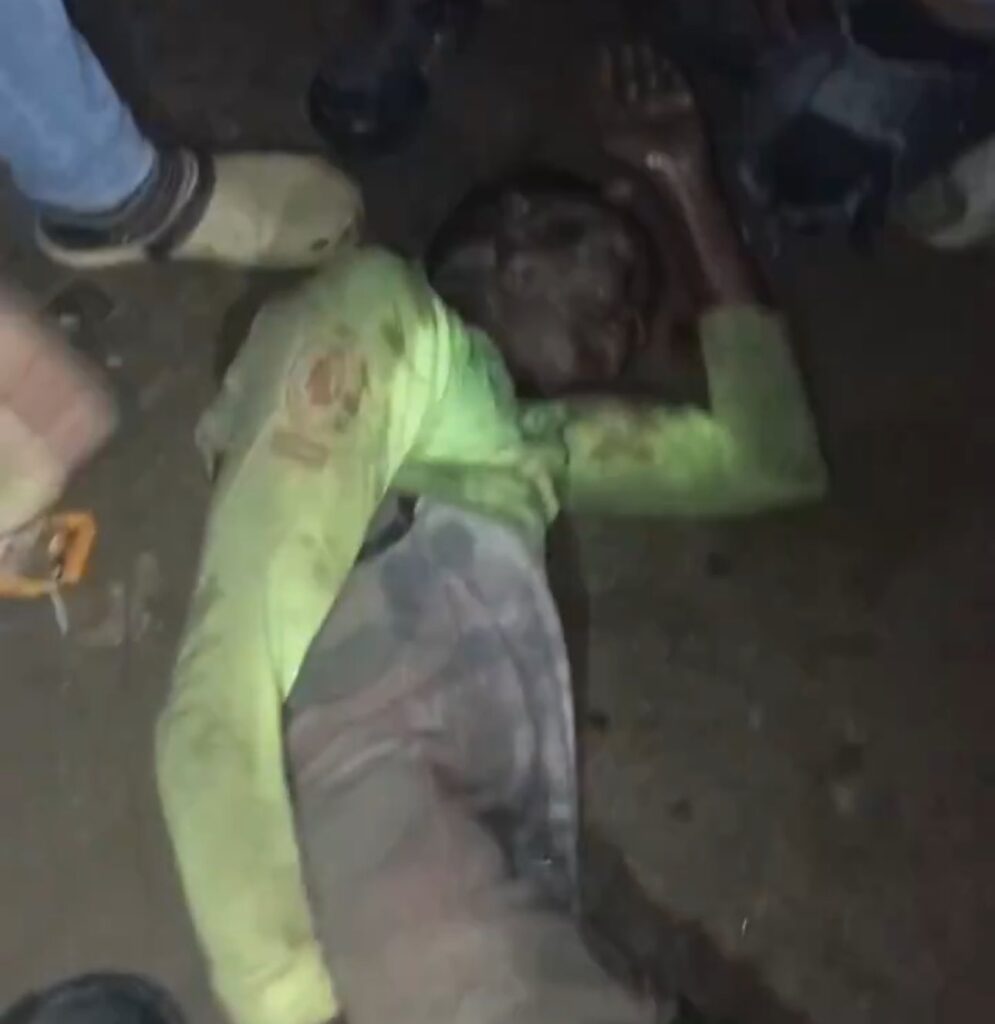In Thika, a small town known for its bustling markets and close-knit community, a thief faced a harsh reality after being caught red-handed. The man, identified as a local resident, attempted to steal from a shop in the busy downtown area.
However, his actions did not go unnoticed. Vigilant shopkeepers and patrons quickly raised the alarm, leading to a swift and intense response from the public.
As the thief tried to make his escape, he was chased down by an agitated crowd. The mob, fueled by anger and frustration, quickly apprehended him. Within moments, what started as a chaotic pursuit turned into a scene of mob justice.
The thief, cornered and outnumbered, had no chance to defend himself. The crowd, intent on delivering their own form of punishment, began to beat him.
The brutality of the mob was alarming. Bystanders watched in a mixture of shock and horror as the thief was subjected to relentless blows. Some members of the crowd used makeshift weapons, while others resorted to their fists and feet.
The thief’s cries for mercy were drowned out by the shouts and jeers of the mob, who saw this as a way to send a message to other would-be criminals.
Local authorities, alerted to the situation, rushed to the scene in an attempt to restore order.
Police officers struggled to push through the dense crowd, their presence initially met with resistance. It took significant effort and the threat of arrests to disperse the mob.
Eventually, the police managed to reach the battered thief and secure him from further harm. He was quickly taken into custody and transported to the nearest hospital for treatment.
The incident has sparked a heated debate within the community about the rise of mob justice.
Many residents feel that the legal system is too slow and lenient, prompting them to take matters into their own hands. They argue that swift and decisive action is necessary to deter crime.
However, others condemn the mob’s actions, stressing that such behavior undermines the rule of law and can lead to tragic consequences.
Local leaders and activists have called for a thorough investigation into the incident. They emphasize the need for both justice for the victims of theft and accountability for those who participated in the mob violence.
The town’s administration has vowed to address the underlying issues contributing to the rise in crime and to work towards rebuilding trust in the legal system.
In the aftermath, the thief, now recovering from his injuries, faces legal proceedings. His fate remains uncertain, but the incident has undoubtedly left a lasting impact on Thika.
The event has served as a stark reminder of the dangers of mob justice and the importance of a fair and just legal process.
Community meetings have been organized to discuss ways to improve safety and security in Thika. Proposals include better policing, community watch programs, and educational campaigns to raise awareness about the consequences of mob justice.
There is a growing recognition that a balanced approach, combining effective law enforcement with community engagement, is essential for fostering a safer environment.
The events in Thika have also attracted national attention, with media coverage highlighting the complexities and challenges of addressing crime in small towns.
The story of the thief and the mob has resonated with many, prompting discussions about broader societal issues such as poverty, unemployment, and the efficacy of the justice system.


